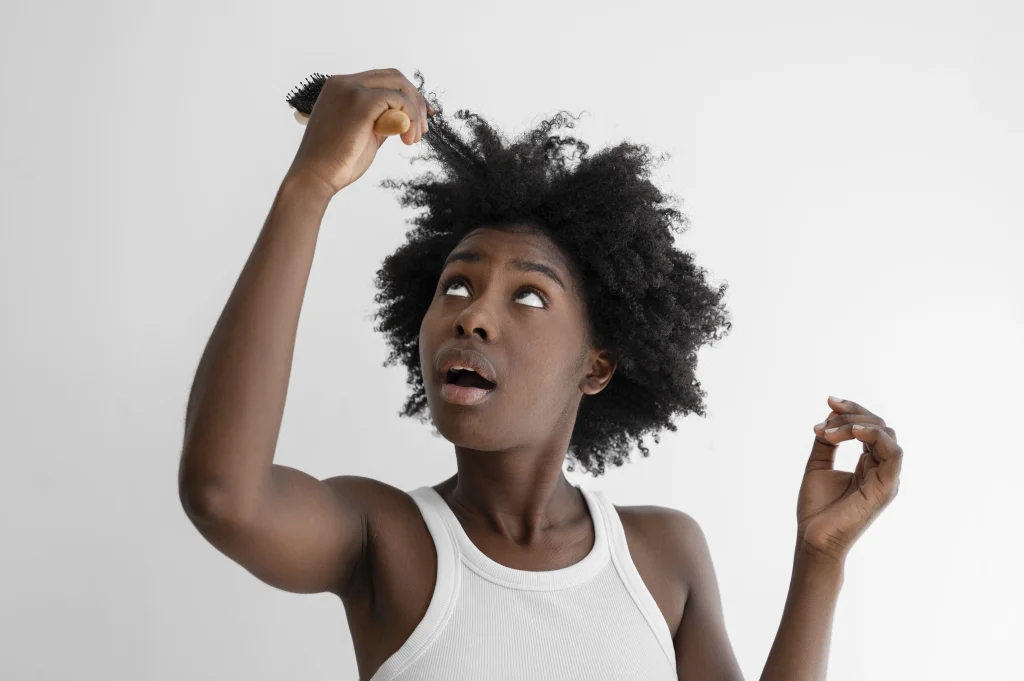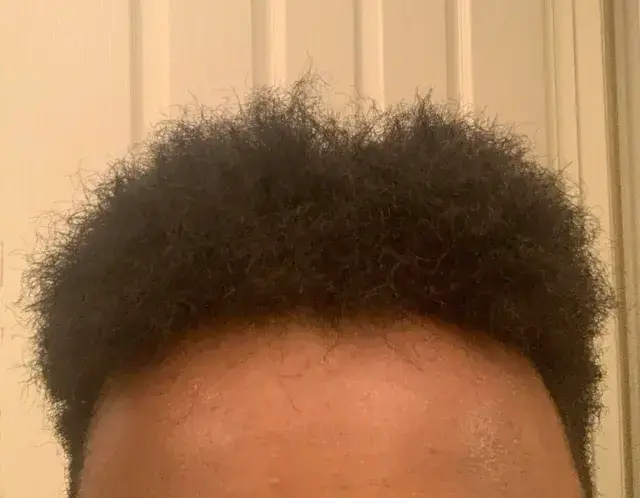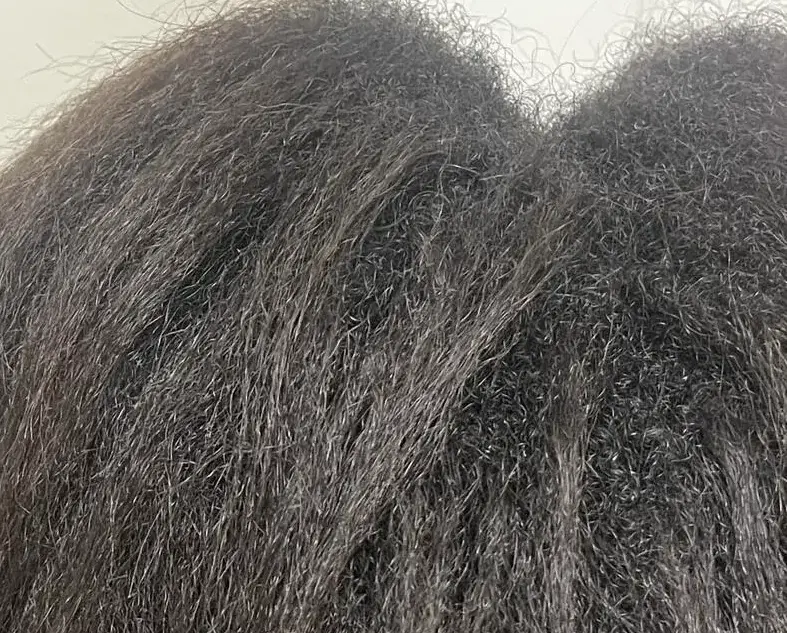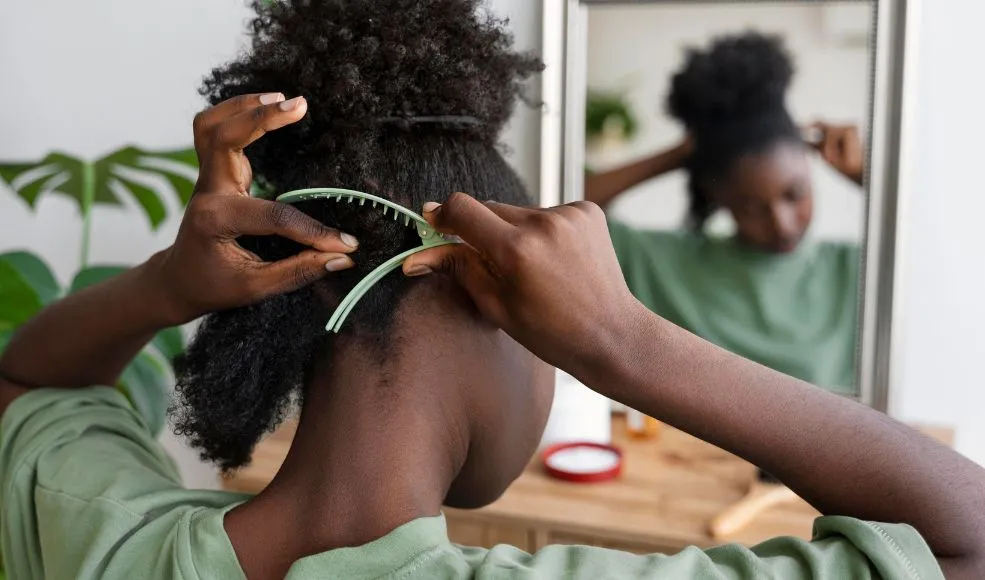When it comes to hair care, spotting damage early is the key to reversing it and keeping your curls looking their best. If you have noticed that your hair is not performing like it used to, don’t worry. This guide will teach you how to spot damaged hair and understand how to treat it effectively.

Damaged hair occurs when its structural integrity breaks down or becomes compromised. As a result, this damage impacts the hair’s appearance, texture, and overall health, leading to frustrating challenges. Not only does damaged hair look and feel unhealthy, but if left untreated, it can also escalate into more serious issues. By recognizing the early signs of damage and understanding its root causes, you can take proactive steps to restore your hair’s vitality and maintain its healthy, vibrant state.
Hair damage occurs due to several factors that disrupt the delicate balance necessary for healthy strands. Here are the primary causes:
Moisture-Strength Balance: Healthy hair maintains a balance between moisture and protein. When this balance is disrupted, whether from over or lack of moisturising or a lack of protein, the hair becomes susceptible to damage. An imbalance can lead to issues like, brittleness, breakage, and frizz, ultimately compromising the hair’s overall health
Compromised Structural Integrity: Each hair strand consists of bonds that hold the strength of your hair together and multiple layers, including the cuticle, cortex, and medulla. When these bonds and layers become compromised due to environmental stressors, improper heat styling, abrasion or improper chemical application, the hair loses its ability to retain moisture and strength. This results in dryness, increased fragility, and a lack of elasticity, making the hair more prone to dullness and breakage.
Understanding the type of damage your hair is experiencing can help you choose the right treatment. Here are the most common types of hair damage:
Chemical Damage: This type of damage occurs from the improper use and application of hair dyes, relaxers and other chemicals. These chemicals contain ingredients that disrupt your hair’s internal and external structure, i.e. your bonds and hair layers, leading to weakened and brittle strands if not managed properly . For black hair, which is already prone to dryness, chemical treatments can exacerbate damage and make hair more susceptible to breakage.

Mechanical Damage: Mechanical damage comes from physical stress on your hair. For black hair, which is often more fragile, mechanical damage can be caused by applying heat without heat protection and abrasion from frequent braiding. These actions will erode the cuticle layer of the hair, leaving the hair exposed, leading to breakage and dryness.

Recognizing the signs of hair damage early can save you from more severe issues down the road. Here are some common indicators:

Damaged hair is not impossible to manage, repair and restore to health. You can do this by leveraging the right treatments, hair care routine and healthy hair practices.
Here are practical ways to repair damaged hair and restore its health;
1. Professional Advice: The first step to repairing damaged hair is seeking professional opinion and advice. Essentially, a professional diagnosis unveils the root cause and provides better insights to tackle it.
2. Hair Treatments: Hair treatments for repairing damaged hair are designed to address specific needs. Some of these treatments include;
3. Healthy Hair Practices: Excessive hair manipulation can lead to mechanical damage. Healthy hair practices such as;
This luxurious therapy blends deeply hydrating ingredients with nourishing proteins, working from the inside out to replenish moisture levels and fortify each strand. Our Hair Rehab Treatment addresses dryness and breakage by restoring your hair’s natural shine and elasticity, leaving you with soft, luscious locks that radiate vitality.
For those dealing with severe damage caused by chemicals or heat, our Molecular Repair Blend Treatment is the ultimate solution. Unlike traditional masks, this treatment penetrates deep into the hair fiber, targeting and reconstructing its molecular structure. By repairing damage at the peptide level, this advanced formula strengthens hair from within, delivering an instant transformation that’s visible and tangible.
If your hair bonds have been compromised due to chemical processes or heat, our Maleic Acid Treatment is designed to repair and strengthen from the core. This treatment rebuilds broken hair bonds, leaving your tresses soft, bouncy, and voluminous. It’s especially beneficial for chemically-treated or heat-damaged hair, helping to reinforce and restore your hair’s natural structure.
For smooth, sleek, and frizz-free hair, our Amino Acid Treatment works on a molecular level to seal cuticles and protect hair strands. This treatment repairs damaged hair by infusing it with essential amino acids, promoting a smoother texture while reducing frizz. It’s perfect for maintaining healthy hair by locking in moisture and protecting against future damage.
Damaged hair requires special care and attention, and here at Tresses, we’re committed to providing just that. We take a personalized approach to tackle hair damage, tailoring our expertise and treatments to meet your unique hair needs. Our goal is to repair, restore, and revive your strands, ensuring they regain their strength and vitality.
Copyright 2025 © Tresses Lagos | Created with 🤍 by Toast
Subscribe to our weekly newsletter for expert tips and tricks on healthy hair care and get our free Hair PlayBook.